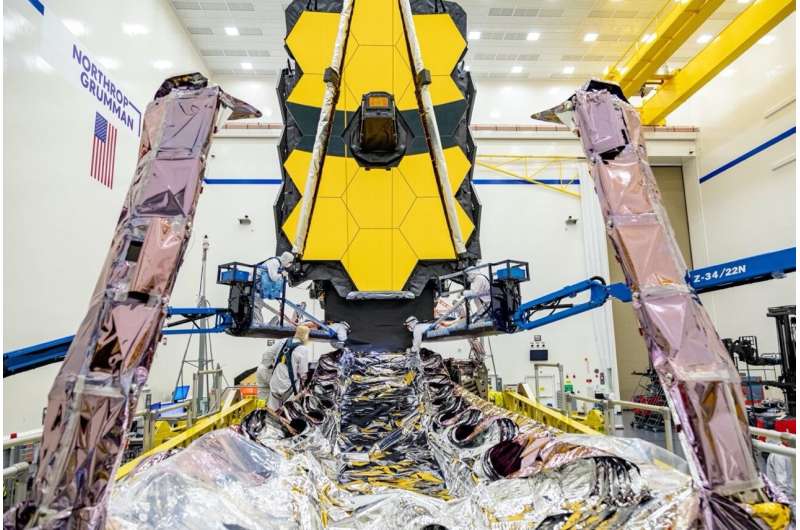When fully deployed, the tower reaches ten feet in length, which also gives the observatory's sunshield just enough room to unfold its complex mechanisms. Recently this tower was fully extended for the very last time in testing, just as it would once in space. Testing teams then lowered the tower and locked it into place to prepare for launch later this year. The next time this tower will deploy will be when Webb is in space.
AOS (Aft Optics Subsystem) Cover: Removed
Webb's "lens cap" has been removed! A technician can be seen carefully removing what's known as Webb's aft optics subsystem cover. This important piece of protective equipment has kept the observatory's instruments clean, contaminant-free, and safe from stray light while it was assembled and fully prepared for flight. Now that launch is so close, the cover has been removed to allow engineers freedom to continue packing up the rest of the observatory into its flight-like formation.
Unitized Pallet Structure: Stowed for Launch
Webb's tennis court-sized sunshield folds up perfectly to rest on what is known as a unitized pallet structure. These long support structures are part of the observatory's complex folding mechanism that allows it to just barely fit inside an Ariane 5 rocket for launch. Now that Webb's lens cap has been removed, engineers were free to finish the process of folding the pallets upward into their final configuration for launch. In the accompanying picture, Webb's pallet structures can be seen partially lifted, but they have since been fully raised and locked in place for launch later this year.

The testing was conducted in a clean room at Northrop Grumman in Redondo Beach, California.
The James Webb Space Telescope will be the world's premier space science observatory when it launches in 2021. Webb will solve mysteries in our solar system, look beyond to distant worlds around other stars, and probe the mysterious structures and origins of our universe and our place in it. Webb is an international program led by NASA with its partners, ESA (European Space Agency) and the Canadian Space Agency.
Explore further



